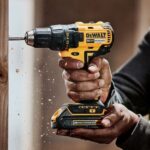If your Dyson vacuum isn’t performing like it used to, don’t worry—you’re not alone. Many users face issues that can seem daunting, but most problems are surprisingly easy to fix. With a little guidance, you can get your vacuum back to its powerful best in no time.
From clogged filters to tangled brush bars, understanding the common issues can save you both time and money. You’ll find that troubleshooting your Dyson is often a straightforward process. Get ready to roll up your sleeves and dive into some quick and effective solutions that’ll have your vacuum running smoothly again.
Common Issues With Dyson Vacuums
Dyson vacuums can sometimes face performance issues. Understanding these common problems helps you troubleshoot effectively.
Loss of Suction
Loss of suction often results from clogged filters or blocked hoses. To fix this, check the filter and wash it under cold water if it appears dirty. Ensure it dries completely for 24 hours before reinserting. Inspect hoses for blockages, clearing debris with a long, flexible brush or similar tool. Additionally, check for obstructions in the brush bar. Hair and dirt buildup can impede suction. Regular maintenance prevents this issue from recurring.
Unusual Noises
Unusual noises during operation might indicate a problem with the brush bar or motor. If you hear a rattling sound, inspect the brush bar for tangles. Remove hair or debris that could cause noise. If grinding noises occur, this may suggest motor issues, often requiring professional evaluation. Address these sounds promptly to prevent further damage to your vacuum. Regular cleaning and maintenance help minimize the likelihood of unusual noises.
Tools Needed for Repairs
Having the right tools simplifies Dyson vacuum repairs. Gather these essential tools and safety equipment to ensure effective and safe servicing.
Essential Tools
- Screwdriver set: Use a set that includes flathead and Phillips screwdrivers for various screws inside your vacuum.
- Pliers: Grab pliers for removing stubborn debris or items lodged in the vacuum components.
- Cleaning brush: Choose a soft-bristle cleaning brush for gently clearing dust and dirt from filters and brush bars.
- Replacement parts: Keep common replacement parts like filters, belts, and brush bars on hand for quick fixes.
- Multimeter: Use a multimeter to test electrical components, including wires and motors, for functionality.
- Wrench set: Use a wrench set for loosening or tightening bolts that secure parts within the vacuum.
Safety Equipment
- Safety goggles: Wear safety goggles to protect your eyes from debris or dust during repairs.
- Gloves: Use durable gloves to keep your hands safe from sharp edges and abrasive materials while working on your vacuum.
- Mask: Wear a mask to avoid inhaling dust when cleaning or disassembling your vacuum.
- Knee pads: Consider using knee pads for comfort if you’ll spend extended time kneeling during repairs.
- First aid kit: Keep a first aid kit nearby in case of minor accidents related to handling tools or components.
Step-by-Step Repair Guide
Follow these steps to troubleshoot and repair your Dyson vacuum efficiently. Proper maintenance enhances performance and extends the vacuum’s lifespan.
Cleaning the Filter
- Turn off the vacuum and unplug it from the outlet.
- Locate the filter, usually found near the motor or dust container.
- Remove the filter by twisting or pulling it free, following the user manual for guidance.
- Rinse the filter under cold water until the water runs clear. Avoid using soap or chemicals; this keeps the filter effective.
- Let the filter dry completely for at least 24 hours before reinserting it. Ensure it’s completely dry to prevent mold or odors.
Checking the Brush Bar
- Examine the brush bar for debris, hair, or tangled fibers that could be hindering performance.
- Turn off and unplug the vacuum for safety.
- Remove the brush bar by following the manufacturer’s instructions, typically found in the user manual.
- Clean the brush bar with a soft-bristle cleaning brush or your hands. Cut any hair or fibers using scissors if necessary.
- Reinstall the brush bar once it’s clean and ensure it rotates freely. Check the belt for wear or damage to ensure proper function.
Inspecting the Hose
- Check the hose for any visible blockages or debris. Look for kinks or bends that could impede airflow.
- Detach the hose from the vacuum carefully according to the user manual.
- Use a long brush or a flexible cleaning brush to remove any clogs inside the hose.
- Flush the hose with water, if compatible, to clear out any remaining dirt. Let it dry completely before reconnecting.
- Reconnect the hose securely to the vacuum, ensuring a tight fit that prevents air leaks.
By following these steps, you’ll resolve common issues and keep your Dyson vacuum operating at optimal efficiency.
Maintenance Tips for Longevity
Maintaining your Dyson vacuum ensures optimal performance and extends its lifespan. Implementing regular cleaning routines and proper storage techniques keeps your vacuum in top shape.
Regular Cleaning Routines
- Clean filters regularly: Wash or replace filters every 1-3 months, depending on usage. This prevents clogs and maintains suction power.
- Empty the dust canister: Dispose of dirt and debris each time you use the vacuum. A full canister reduces suction efficiency.
- Check the brush bar: Inspect and remove hair, strings, or debris at least once a month. A clean brush bar enhances performance.
- Clear the hose: Regularly check the hose for blockages or buildup. Use a long, flexible object to dislodge any trapped dirt.
- Wipe down the vacuum exterior: Use a damp cloth to clean the outside to prevent dust buildup and maintain a fresh appearance.
Proper Storage Techniques
- Store upright: Keep the vacuum in an upright position to prevent any damage to the motor or suction components.
- Avoid extreme temperatures: Store the vacuum in a climate-controlled environment. Extreme temperatures can damage the battery and components.
- Use attachments wisely: Attach small tools to the vacuum when stored. This prevents loss and ensures everything is together for the next use.
- Keep the cord tangle-free: Wrap the cord neatly to prevent wear and tear. A tangle-free cord lasts longer and looks tidy.
- Check for any spills or leaks: Ensure no residual debris or liquid remains in the canister or hose before storage. This prevents odors and bacterial growth.
Conclusion
Taking the time to troubleshoot and maintain your Dyson vacuum can make a significant difference in its performance. By addressing common issues like clogged filters and tangled brush bars, you can restore suction and keep your vacuum running smoothly.
Regular maintenance is key to preventing future problems. Implementing a cleaning routine and using the right tools will not only enhance your vacuum’s efficiency but also extend its lifespan.
Remember to stay proactive with inspections and repairs. With a little effort, you can ensure your Dyson vacuum continues to serve you well for years to come.


